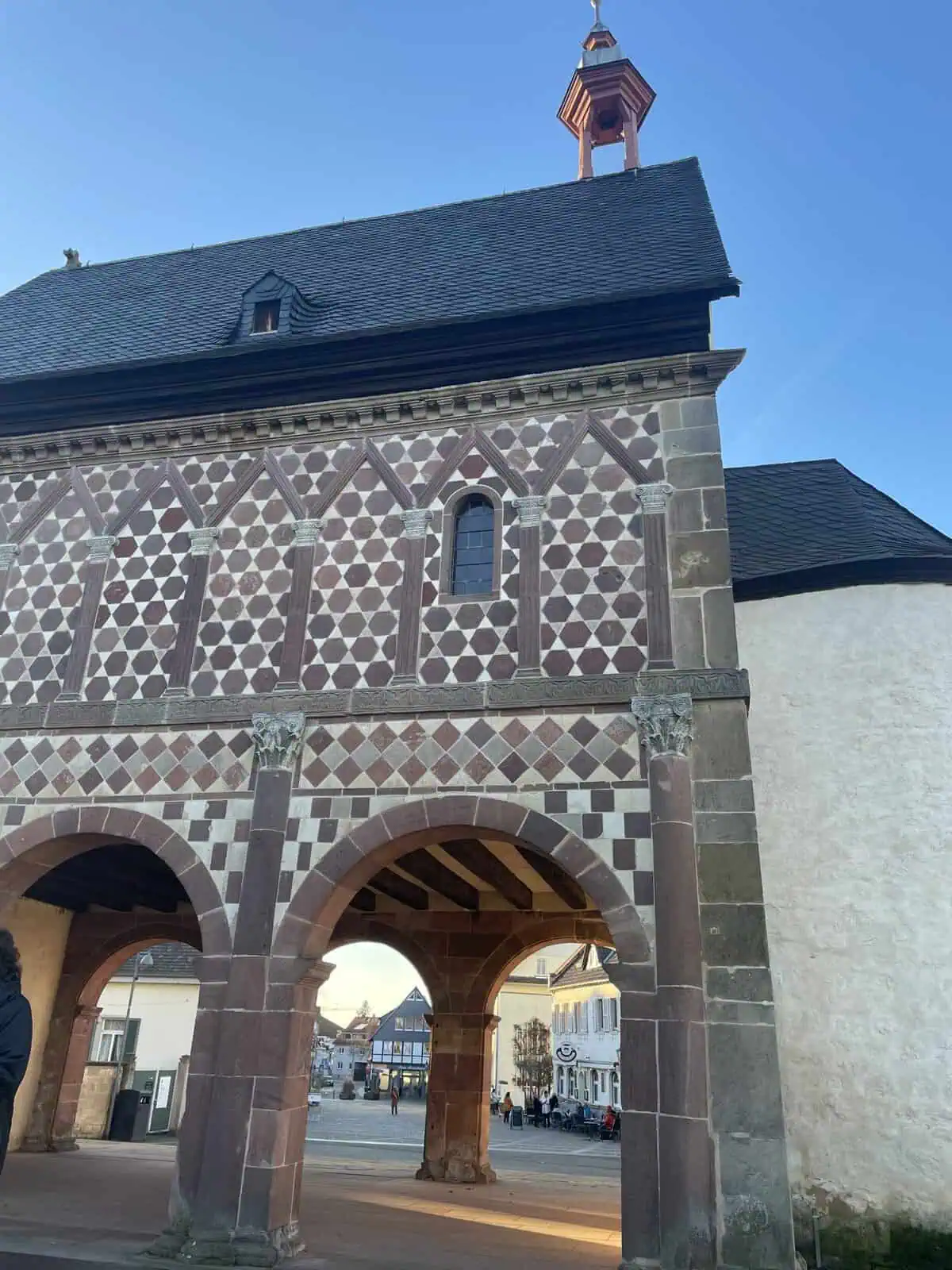Lorsch Monastery World Heritage Site – A Space with History
As we follow the signs from the parking lot, I’m almost a little disappointed.
There isn’t all that much to see, let alone the entire monastery complex. But you immediately sense the size, the space, the idea of what was once here. And even though the cold winter air of the first days of February calls for hot chocolate, you simply want to conquer this ground, this space.
Lorsch Abbey was rich and vast, and in the 8th century, wealthier than the famous St. Gallen. Scientific work and copies of important medical texts by the monks led to the creation of the “Lorsch Pharmacopoeia,” a UNESCO World Heritage Site.
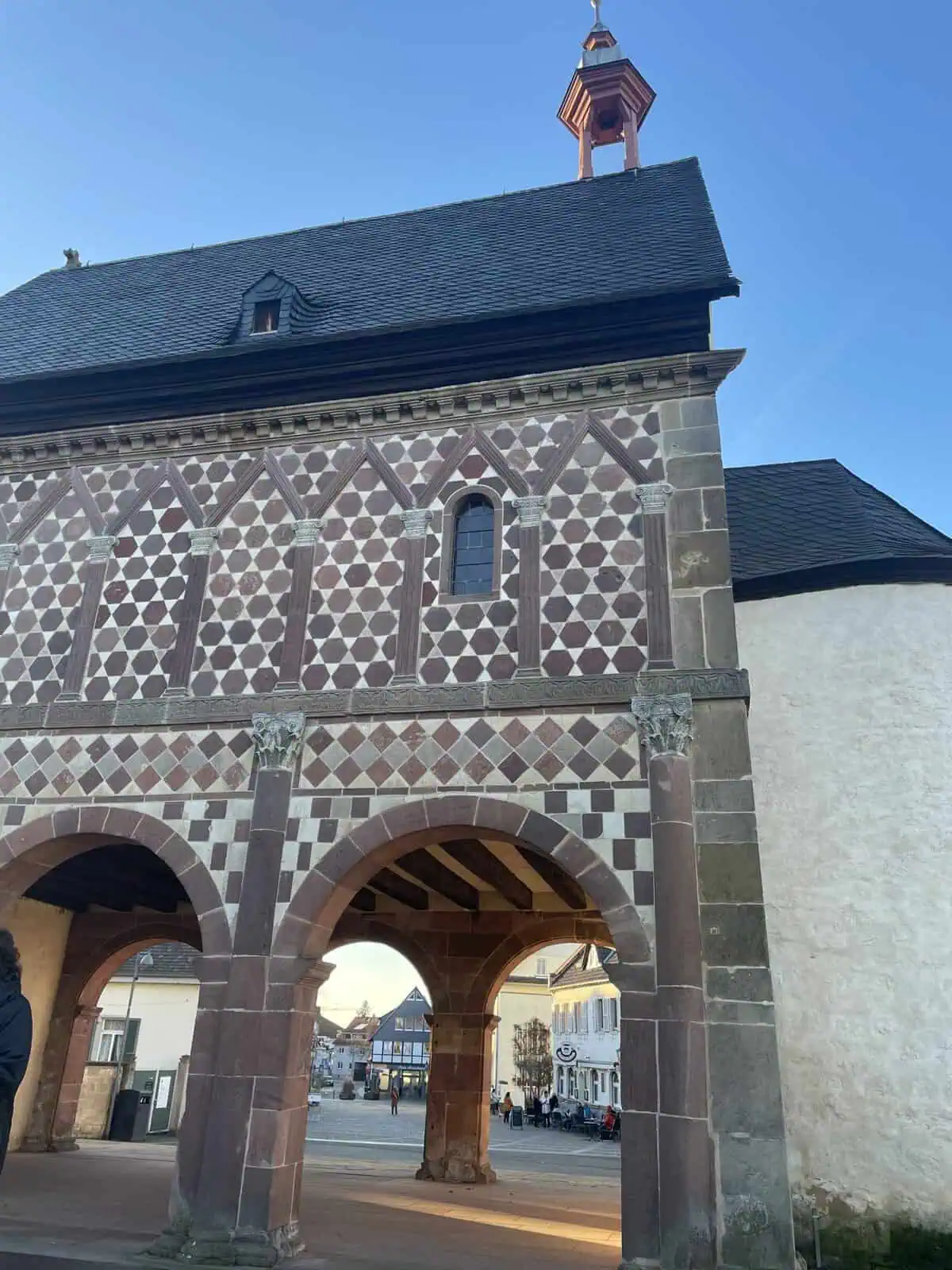
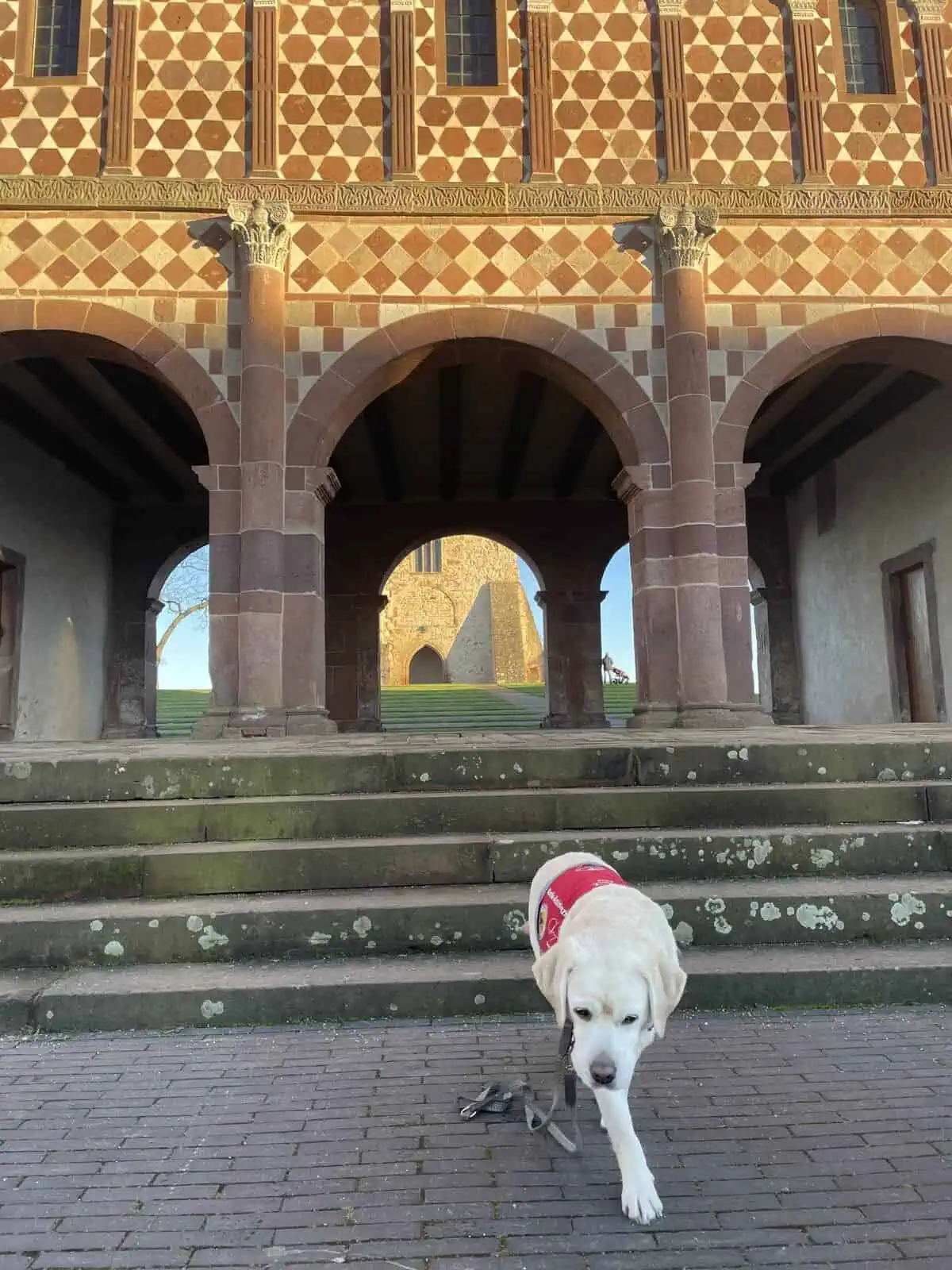
The various sights are scattered across a large area—the church, the Royal Hall, whose function is unclear, the exhibition complex, and other historical elements. This Royal Hall is beautifully presented, as if it were standing in a state of profound relaxation against time, leaving space that makes it easy to imagine a monastery complex. We couldn’t walk through the vast area, so you might want to plan several visits.
The large, green grounds offer numerous activities, including the tithe barn, the village, and Lauresham’s open-air laboratory, which offers a guided tour that depicts the life of serfs during the time of Charlemagne, as well as a herb tour and workshop. There are many exciting tours, for example, on the topic of tobacco or women in the monastery environment.
The museum’s website provides good information about accessibility. I would add: Don’t underestimate the distances! Anyone with health restrictions should definitely consider the distances and bear in mind that the route is hilly and not all paths are easily accessible by wheelchair or on foot. The King’s Hall can only be reached via stairs. The extensive grounds generally encourage dog owners. Depending on the weather, you may encounter many dogs outside. Assistance dogs are permitted on tours everywhere, but please indicate this when booking. I found it a bit difficult that the tours almost always last 90 minutes. When you factor in the fact that you still have to get to the tour location on the extensive grounds, the assistance dog’s maximum concentration time is quickly reached. If I were to book a guided tour, I would find out whether it might be possible to leave beforehand.
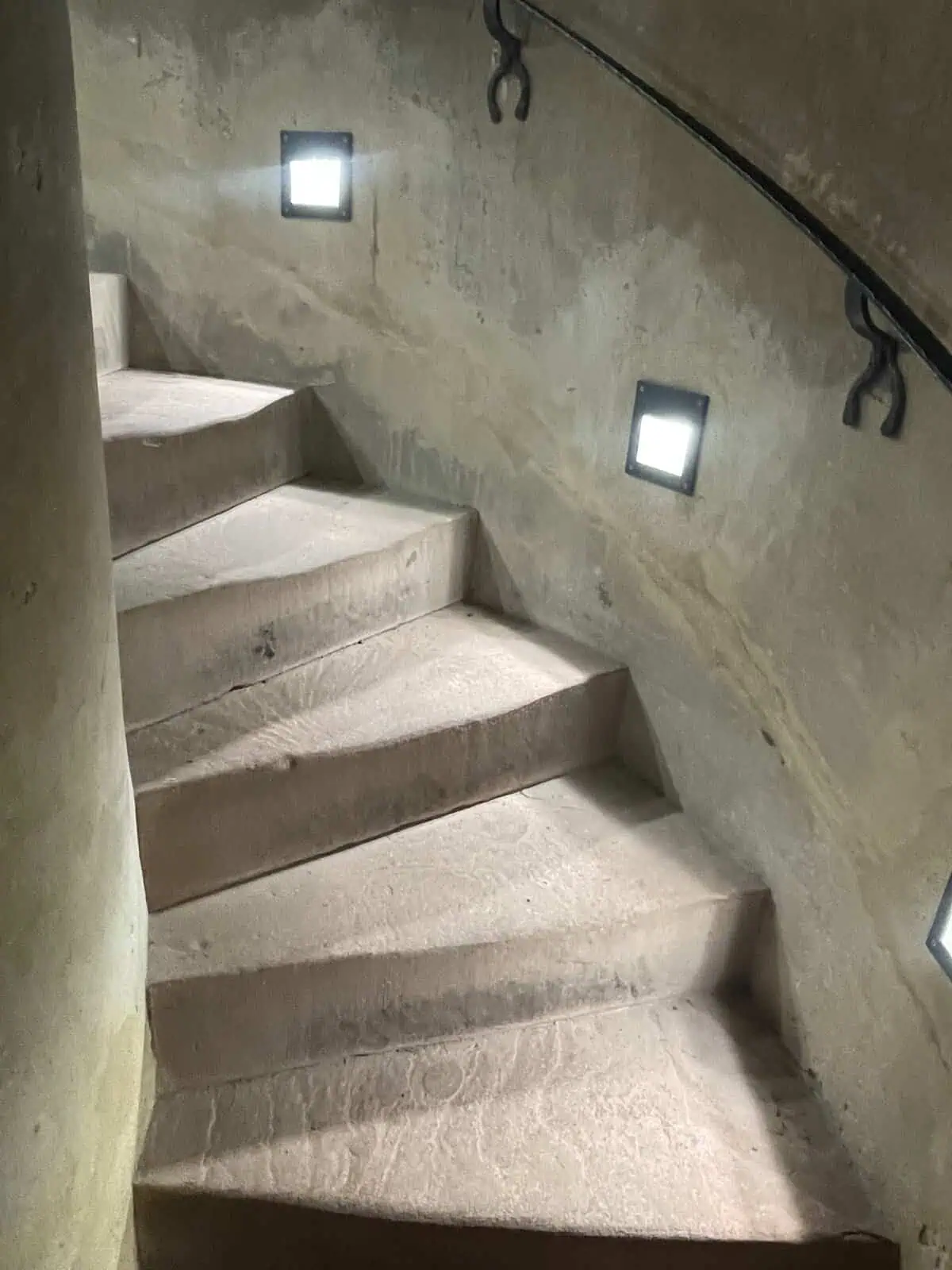
We decided to go to the museum. With our wheelchair and assistance dog, it wasn’t a problem at all. The friendly ladies at the ticket counter didn’t know anything about assistance dogs, but they quickly enlightened us, and now you can find a clear statement about assistance dogs on the museum’s website.
There’s a section on the monastery’s history, one on the Lorsch Tobacco Museum, and the exhibitions on the upper floor change. We were both scared and amazed by the history of medicine. Next time, we’d book one of the exciting tours, and you can even stay overnight on the grounds.
We’d like to share with you a fascinating story from another assistance dog owner. Thank you, Gabi!
In August 2024, I visited the “Lauresham Open-Air Laboratory” at the Lorsch Monastery, a UNESCO World Heritage Site.
I took part in a 90-minute guided tour with my mobility assistance dog “Nurmi” on the topic of “Women in the area around Lorsch Monastery.”
I took partI had clarified in advance via email that I would be bringing my assistance dog, and I was immediately recognized at the entrance/ticket office and waved through. I didn’t have to provide any proof; my dog always wears the round silicone patch on his harness, which is visible at all times. All the staff at the open-air museum were very friendly and helpful. They had no further questions for me regarding my dog.in a 90-minute guided tour with my mobility assistance dog “Nurmi” on the topic of “Women in the area around Lorsch Monastery.”
The tour began after the ticket office with a walk through an exhibition located in the building, then we went to the outdoor area.
The tour was excellent in terms of content, but it can be challenging for those with limited mobility (walking), as the path through the open-air museum’s outdoor area is natural, partly graveled, partly very narrow (footpath), and overgrown with tufts of grass. There’s a stone step at the entrances to the manor house and the church, and several very high, clay-stamped steps leading to the textile workshop.
Participants are welcome to borrow stools for the tour free of charge, which they can then carry around with them during the 90-minute tour and use to sit on when the guide stops and speaks. On the very hot August day I was there, all participants brought a stool, and a museum intern carried one for me.
What makes the tour of the open-air laboratory at Lorsch Abbey so attractive for us assistance dog teams—as for all dog owners—is the outdoor experience, and especially the staff’s hospitality toward us. Of course, I made sure the assistance dog didn’t have to relieve himself during the tour. The path is very narrow in places. One person follows in the other’s footsteps, and the small herb garden is also off-limits for such activities.
What I still think could be improved is the disabled restroom after the ticket office. It can’t be locked from the inside. A museum employee had to stand in front of it.
Otherwise, no complaints and I will definitely take part in one of the other tours next spring.
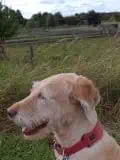
We thank Aktion Mensch!



